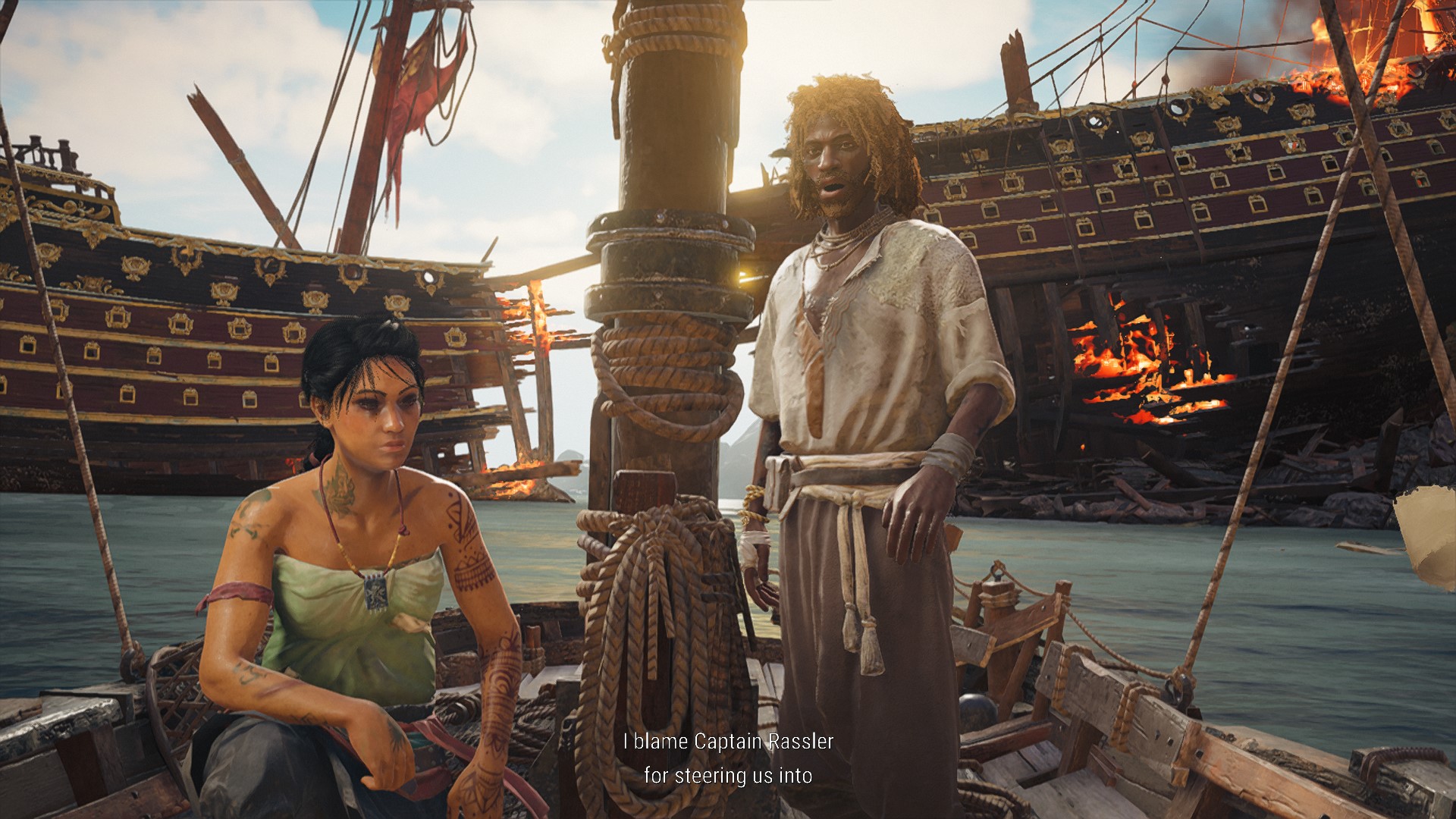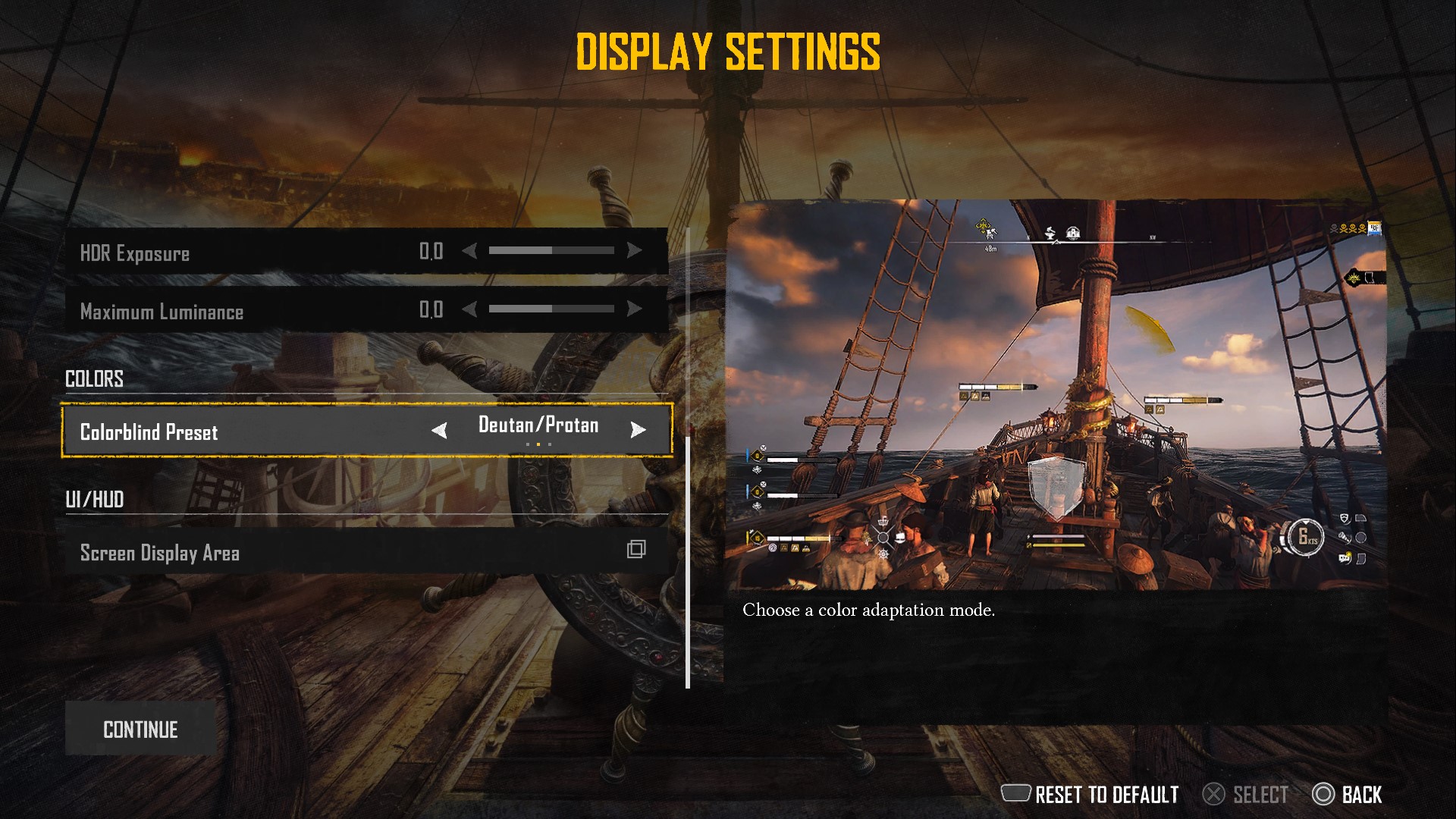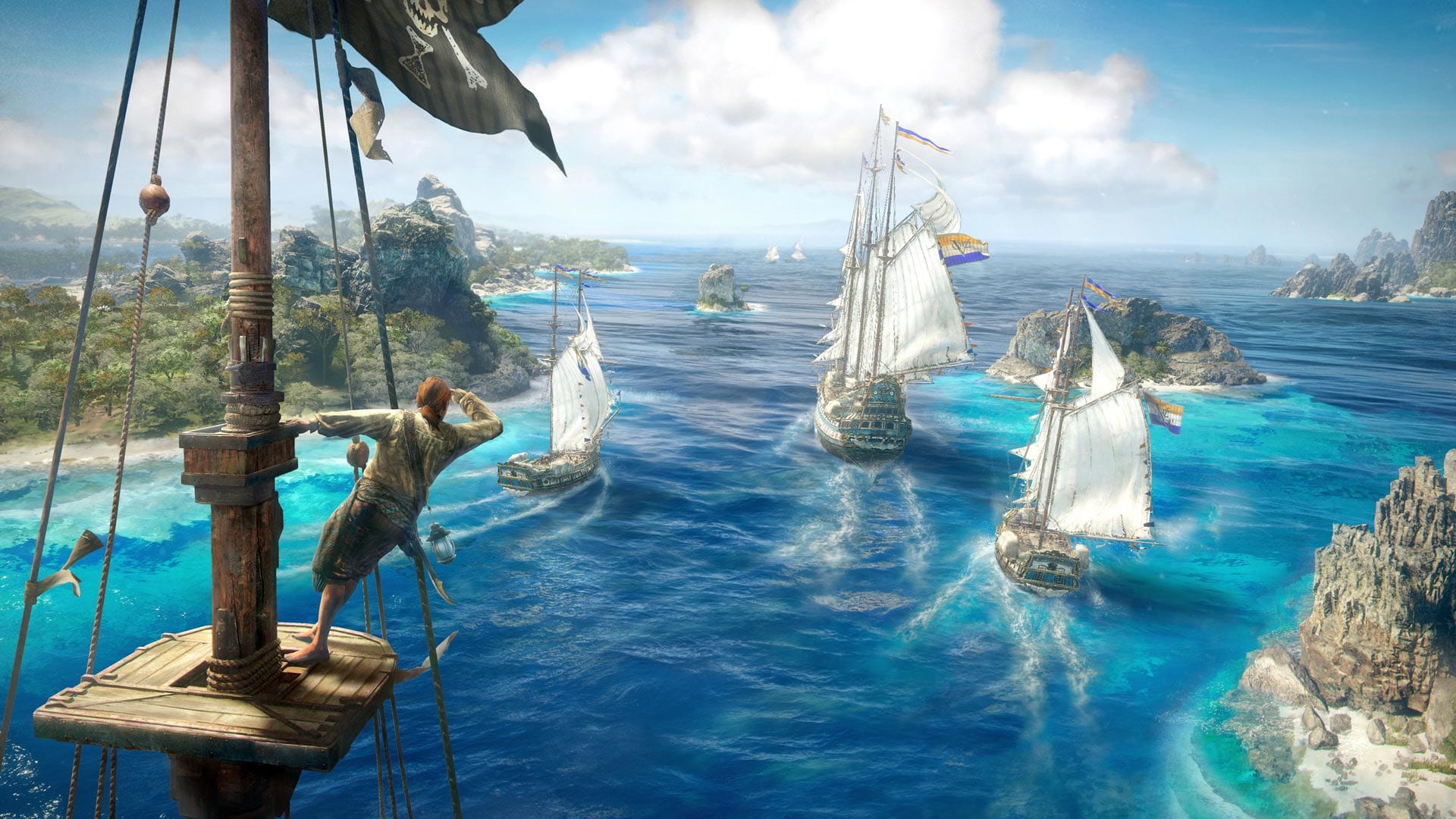TechRadar Verdict
Skull and Bones has well-built fundamentals, but lacks the follow-through to deliver on the potential of its fun naval combat and earnest commitment to the pirate fantasy.
Pros
- +
Immersive sailing
- +
Meaningful ship customization
- +
Exciting nautical combat
Cons
- -
Repetitive missions and encounters
- -
Bloated crafting system
Why you can trust TechRadar
Platform reviewed: PC
Available on: PS5, Xbox Series X|S, PC
Release date: February 16, 2024
Despite its troubled development cycle, Skull and Bones has plenty to offer for fans of naval combat or those looking to immerse themselves in a pirate fantasy. Engaging ship battles, a wide scope for ship customization, and immersive sailing mechanics all confirm that Ubisoft's latest live service open-world game has some strong fundamentals. However, thanks to a thin storyline, repetitive mission structures, and a narrow range of enemy types, Skull and Bones feels underdeveloped, like a pencil drawing that’s yet to be filled in by color or shading.
In Skull and Bones, you play as a ship captain during the second golden age of piracy in the late 17th century. The prologue has you ambushed by British sailors and your ship blown to bits. You are then recovered by the crew of a small gathering ship, and tasked with making a name for yourself. Soon, you arrive at Sainte Anne, a pirate port and hub location run by the ruthless pirate kingpin John Scurlock. So far, so pirate-y.
From here, you carry out contracts, amass resources, construct better ships, and repeat. On paper, it’s not dissimilar to the mechanical loop at the heart of action role-playing games (RPGs) like Diablo 4. However, contrary to Blizzard Entertainment’s dark fantasy adventure, Skull and Bones has little to offer by way of a narrative throughline.
Contracts follow a predictable formula. You go out, sink some enemy ships, take their loot, and deliver it to somebody. Even the story quests will tend to follow this style, too. While Skull and Bones’ central mechanics are strong enough to keep you coming back a few times, eventually, the repetition loses its luster, transforming thrilling piracy into dull bureaucracy.

Taking on my first bounty felt like something straight out of the Pirates of the Caribbean movies. A storm roiled around me and my allies as we took the battle to the marauders - I couldn’t help but be thrilled as we exchanged broadside after frantic broadside.
This feeling isn’t helped by Skull and Bones’ crafting system. The things you can build are fun; that much is true. New weapons fixtures, hulls, and furnishings - which add passive effects to your ships - make for interesting choices when it comes to crafting loadouts and formulating your own distinct approach to battle. However, the process of gathering materials to build these new additions detracts from the pirate fantasy. After all, tales of swashbuckling and romantic high adventure on the seas rarely give much consideration to elements of resource management.
What’s more, those looking for hand-to-hand combat or complex on-foot exploration will be disappointed here. Though Skull and Bones offers plenty of sailing, everything from boarding actions to gathering is undertaken by your crew. There are pirate outposts on which you can land, but these are small areas that are only really relevant when it comes to delivering cargo for a particular non-player character (NPC) or digging up treasure for a sidequest.
Full sail

Despite these drawbacks, Skull and Bones has a firm and impressive grasp on sailing and nautical combat. As a sailor myself, it’s a real bugbear of mine when sailing in games doesn’t take factors like wind direction and tidal currents into consideration. However, it’s also important for in-game sailing not to become too bogged down in the details. This is a line that Skull and Bones walks rather skillfully.
Sign up for breaking news, reviews, opinion, top tech deals, and more.
As in real life, sailing into the wind is a great way to go nowhere fast. Conversely, filling your sails by traveling perpendicular to the wind or downwind gives you a nice little speed buff - useful in a pinch. However, you are not made responsible for manually adjusting your sails - your crew handles this at the touch of a button. With a single input, you can toggle your sail settings, allowing you to easily change course even in the middle of a hectic fight. The sailing mechanics are technical enough to factor into your movement and keep you on your toes, but not too technical as to alienate or bore those who aren’t quite as familiar with the ins and outs of sailing.
All of this serves to add a satisfying edge to nautical combat. Much like in Assassin’s Creed 4: Black Flag, you aim your cannon fire manually while controlling your ship in real-time. Depending on your ship’s loadout, your different weapons will be able to fire in various directions. Subject to cooldowns, you’ll need to patiently time your shots - a feat that becomes an exciting challenge when combined with managing your ship’s speed and position relative to enemy ships.
Ships are highly customizable both cosmetically and mechanically
Do you thread the needle between an enemy formation, exposing yourself to fire but allowing you to unleash a left and right volley at the same time? Do you bear away from a foe to pepper them with your rear cannons, or is it best to stay engaged and attempt to board? These sorts of questions must be answered as battles unfold, making tough engagements feel tense and rewarding.
There are plenty of weapons and furnishings to choose from for your ship, too. While there are more traditional armaments like culverins and long guns, mortars, torpedos, and even rocket launchers are all available to enterprising pirates looking to spice up their loadouts. What’s more, ships are highly customizable both cosmetically and mechanically. Equipping the right furnishing can be key to getting the most out of your weapons, while plenty of color schemes and embellishments for aesthetic enhancements are available with in-game currency. While the number of cosmetics only available with premium currency did leave a foul taste in my mouth, there were plenty of options to choose from for more frugal seafarers.
Low tides

You are not alone on the seas. In some respects, Skull and Bones feels like a nascent massively multiplayer online (MMO) game. Other players can be found across the waters. You can form ad-hoc groups, banding together to take on tougher missions and contracts. Between other players and an abundance of NPC ships, the virtual Indian Ocean that Ubisoft has constructed feels well-populated.
The issue is that there’s little by way of structured missions or meaningful, player-created narratives to give this impressive open world its own distinct meaning. Grouping up with other players tends to be an ad-hoc affair, where you’ll form parties to take down tough settlements or bosses, only to part once you're finished like, well, ships in the night.

Skull and Bones boasts plenty of accessibility options, including menu narration, the ability to toggle camera shake, and numerous colorblind settings covering deuteranopia, protanopia, and tritanopia.
The different flavors of mission offer little variation. Settlements can be plundered, forcing you to face waves of enemies as your crew ransacks the place. However, the battles themselves are much the same as you’d find while exploring or carrying out one of Skull and Bones’ many repeatable fetch or kill quests. Distinctive enemy types are absent, making for engagements that are fun the first few times, but lose luster after a while. Though boss battles do offer exceptions to this rule, there simply aren’t enough of them to paper over the cracks caused by the limited range of potential encounters on offer.
Skull and Bones may, one day, be transformative. Its mastery of naval combat fundamentals and ability to capture the sights, sounds, and visuals of the pirate life make for impressive achievements. However, right now, there is little beyond these robust foundations to keep players interested. Much like a house without a roof, no amount of sturdy brickwork will suffice to keep the storm out. However, there is hope for Skull and Bones. The live service model gives Ubisoft scope and opportunity to add some much-needed embellishments and variety to its impressive yet samey nautical world.
Looking for other online experiences? Check out our lists of the best multiplayer PC games and the best MMO games.

An editor and freelance journalist, Cat Bussell has been writing about video games for more than four years and, frankly, she’s developed a taste for it. As seen on TechRadar, Technopedia, The Gamer, Wargamer, and SUPERJUMP, Cat’s reviews, features, and guides are lovingly curated for your reading pleasure.
A Cambridge graduate, recovering bartender, and Cloud Strife enjoyer, Cat’s foremost mission is to bring you the best coverage she can, whether that’s through helpful guides, even-handed reviews, or thought-provoking features. She’s interviewed indie darlings, triple-A greats, and legendary voice actors, all to help you get closer to the action. When she’s not writing, Cat can be found sticking her neck into a fresh RPG or running yet another Dungeons & Dragons game.
